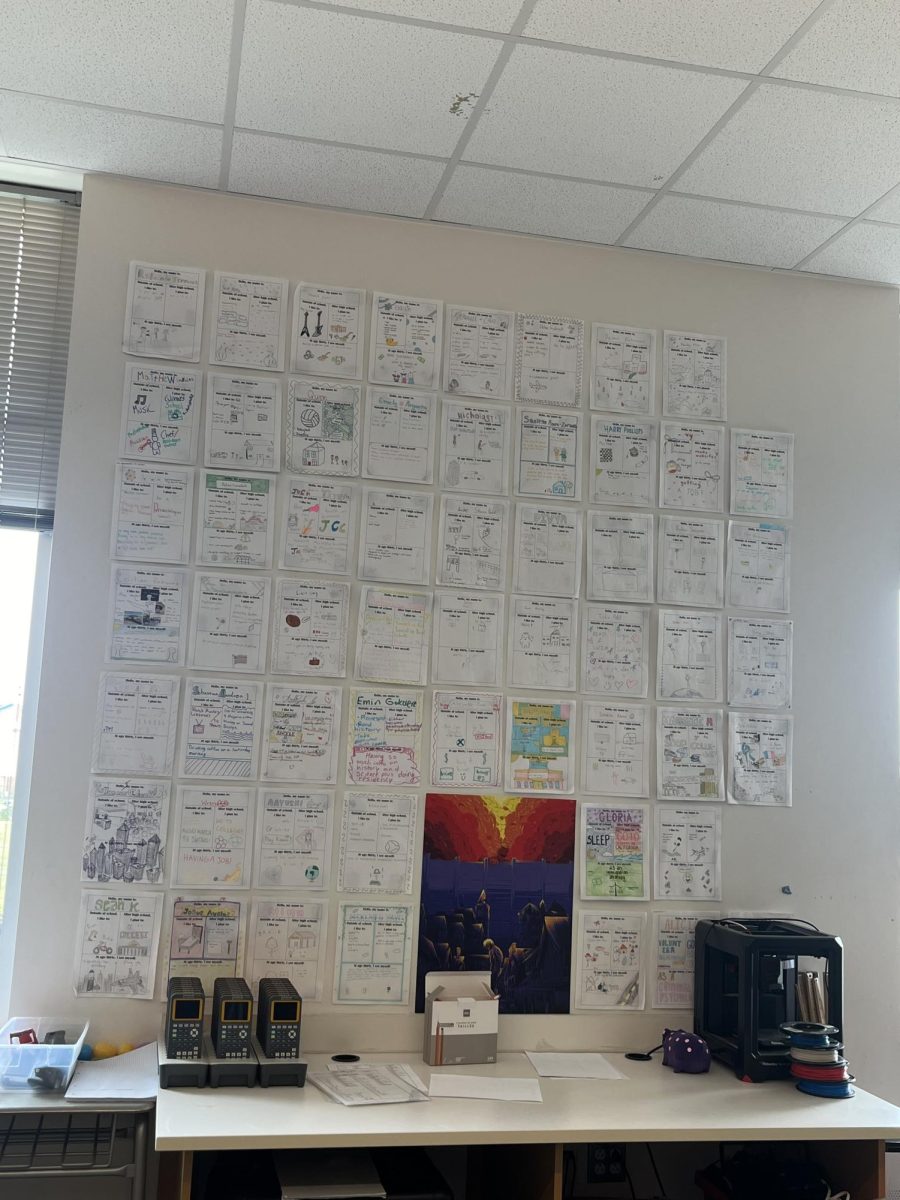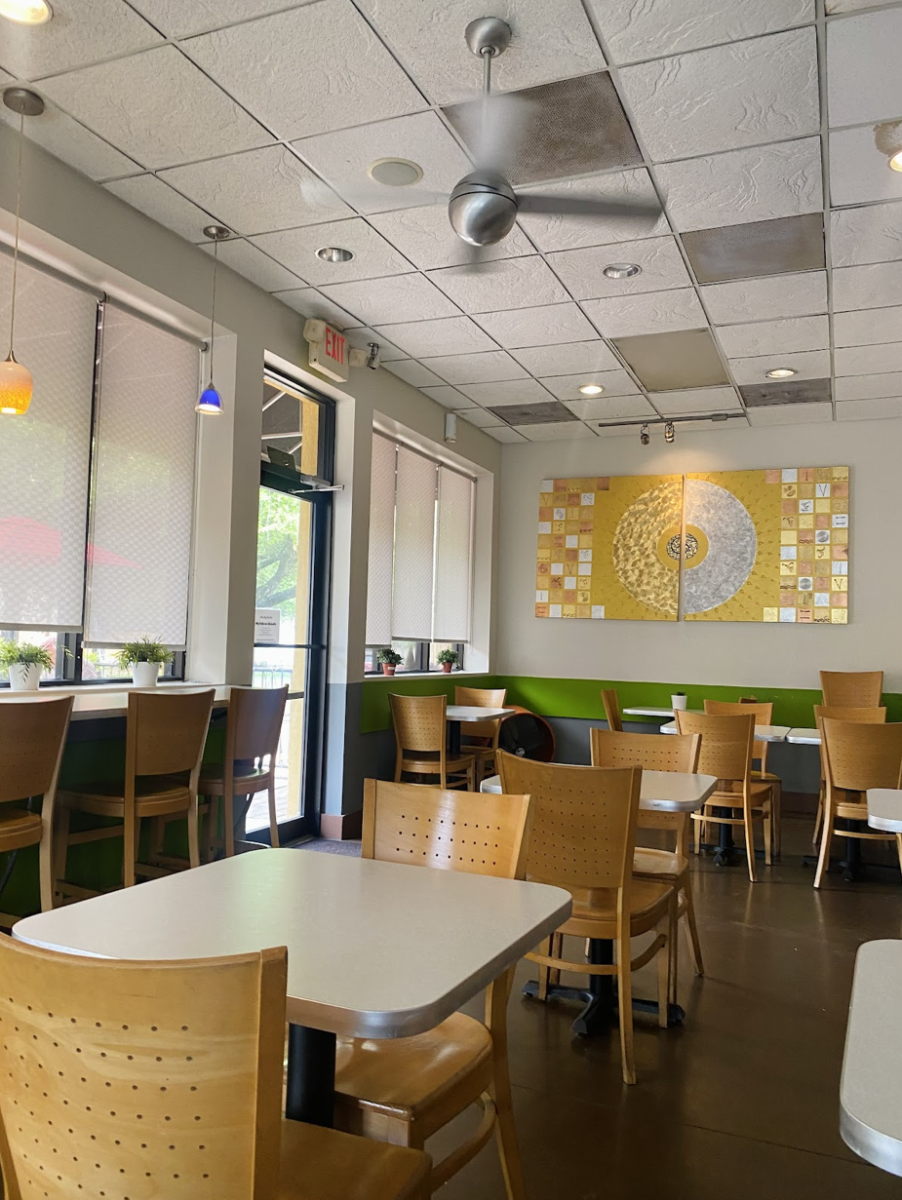Walking into a classroom can feel like stepping into a different world. While the curriculum may be set in stone- classroom ambiance and how a space feels and functions- can truly shape the student experience in unexpected ways. Nowhere is this contrast more evident than in the difference between Carnegie Vanguard’s multitude of classrooms.
In Mr. Lowe’s physics classroom, function meets curiosity. One wall bursts with colorful student-designed posters, each showcasing the personality of Physics 1 students who write about themselves and their future life plans. Gears, weights and motors line the adjacent shelf like a miniature science museum. At the top, whimsical touches like flying pig figurines exemplify the variety of experiments that Physics students conduct during their junior and senior years.
A wall in Mr. Lowe’s class which consists of student-designed posters (Siddharth Dasari)Just down the hallway is Mrs. Brode’s math classroom, a space that radiates a relaxed, welcoming vibe. A large “GOOD VIBES” banner stretches across one wall, framed by leafy green accents and elegant gold lettering—a subtle yet deliberate gesture that invites students to feel cool, calm and collected. Cozy sofas are scattered throughout the room, offering students a place to work comfortably, sneak in a quick nap or chat with friends. Above the main sofa hangs a poster titled, “Words of Wisdom,” filled with uplifting phrases meant to motivate and inspire those who walk in her class.
The history classrooms by contrast feel like a time capsule. Maps, timelines and student-made projects line the walls, creating an atmosphere rich with stories. A vintage-style globe and old political cartoons add character, while dimmer lighting and wooden accents give the room a warm, scholarly vibe—perfect for diving into the past.
These differences highlight how teachers consciously and subconsciously, shape learning through environment. The Physics rooms encourage hands-on experimentation and acknowledge the academic challenge. The Algebra 2 room, on the other hand, seems to prioritize emotional ease and motivation, perhaps understanding that math anxiety can be just as challenging as any circuit problem.
As schools across the country rethink how classroom design influences student engagement, our own campus offers a living case study. Whether it’s the clicking of a gear model or the rustle of a poster proclaiming “good vibes,” these spaces reflect the values, personalities and teaching philosophies of the educators who lead them.
In the end, ambiance isn’t just decoration at Carnegie, it’s part of the lesson plan. Behind each classroom design is an intention to make students feel comforted, welcomed and motivated. Next time you walk into a classroom, take some time to soak in your surroundings. You never know where you may find some inspiration.









